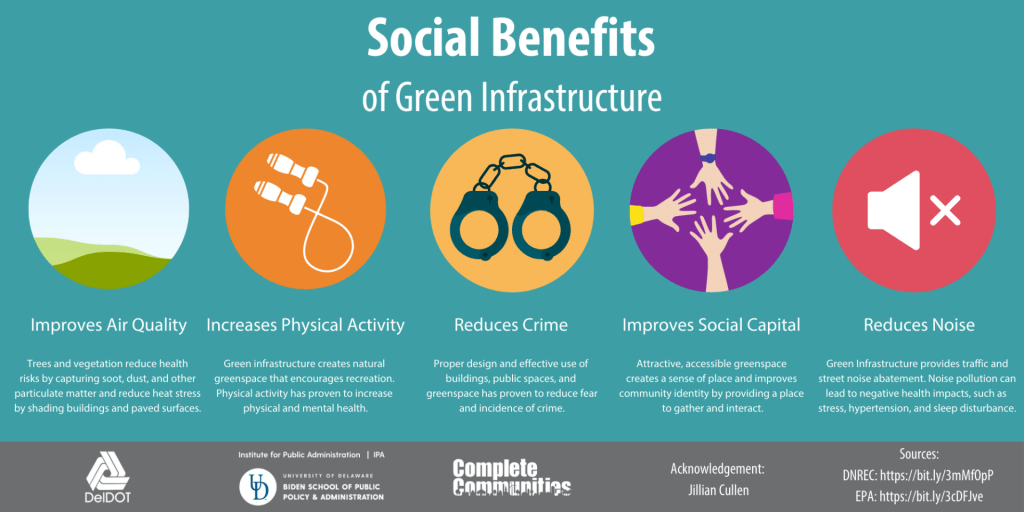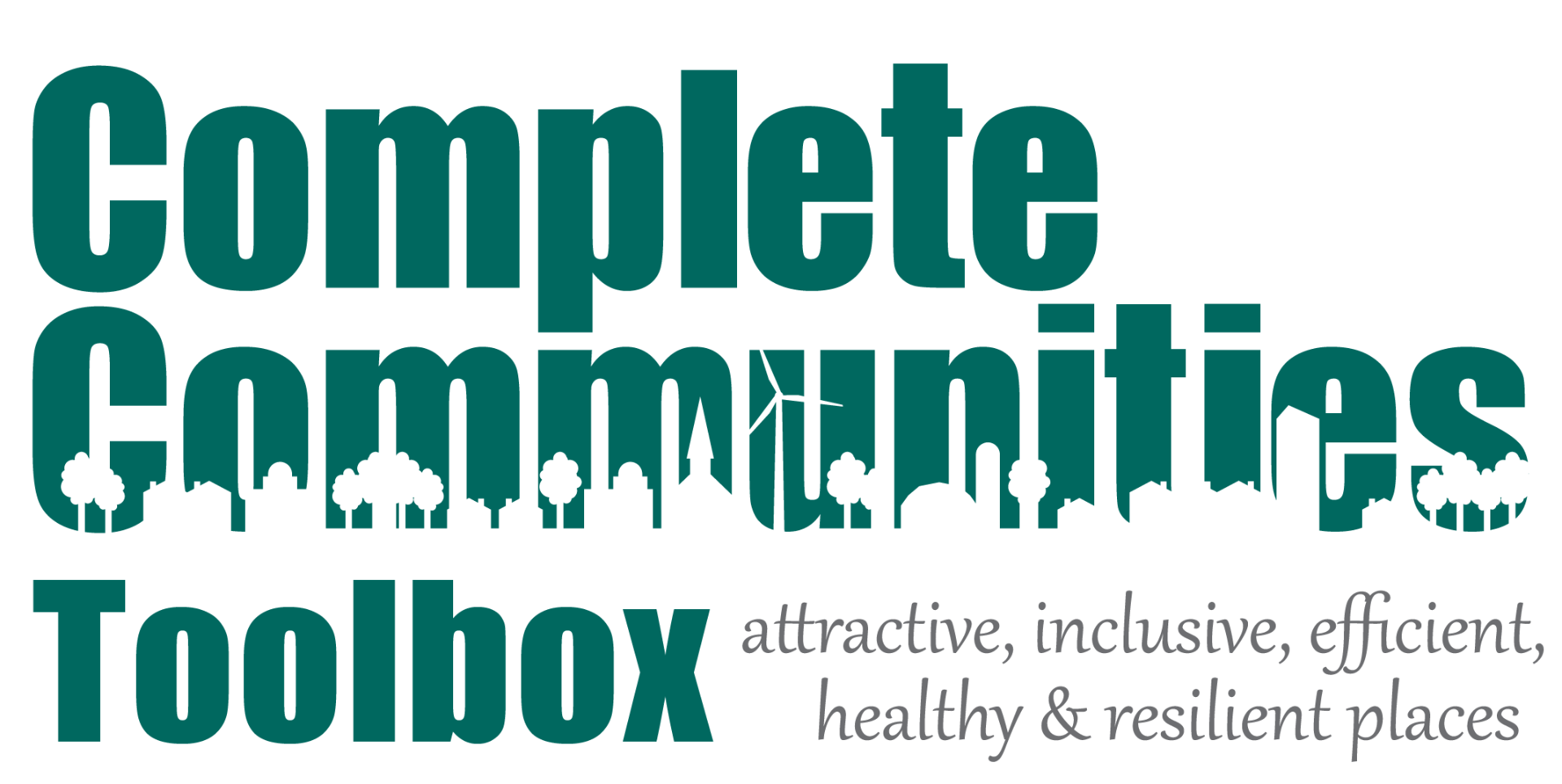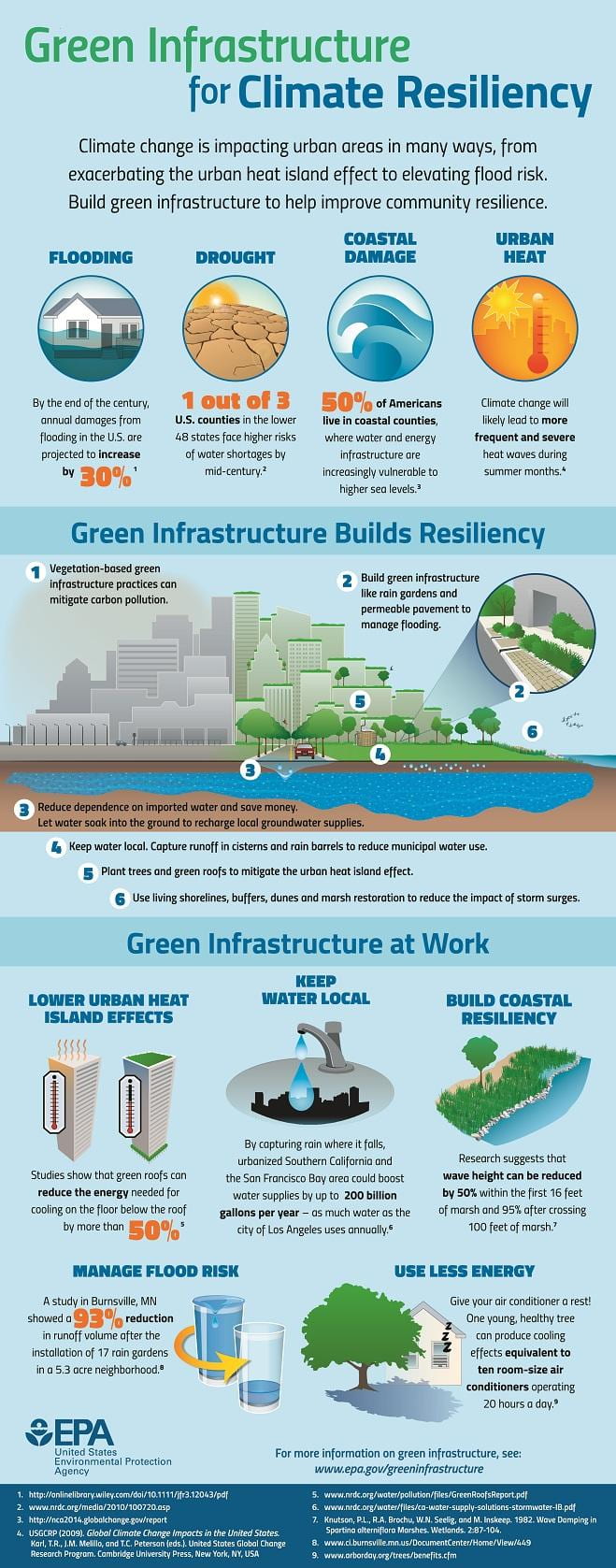What is Green Infrastructure?
While definitions vary, the Environmental Protection Agency (EPA) describes green infrastructure as “…the range of measures that use plant or soil systems, permeable pavement or other permeable surfaces or substrates, stormwater harvest and reuse, or landscaping to store, infiltrate, or evapotranspirate stormwater and reduce flows to sewer systems or to surface waters.”
The Delaware Department of Natural Resources and Environmental Control (DNREC) similarly defines green infrastructure as “a nature-based approach that uses a combination of engineering and nature’s own systems to address environmental challenges like erosion, flooding, and air and water pollution.” Essentially, green infrastructure serves as a solution to urban and climate change challenges.
Benefits of Green Infrastructure
Green infrastructure reduces and treats stormwater at its source while delivering environmental, social, and economic benefits.
Environmental Benefits
Check out this infographic created by the Environmental Protection Agency (EPA) to learn more about the environmental benefits of green infrastructure.
Social Benefits
Check out our infographic below that highlights the numerous social benefits green infrastructure can have in your community!
 Economic Benefits
Economic Benefits
According to DNREC, compared to gray infrastructure, green infrastructure often has lower capital and operating costs. Additionally, by increasing water storage and filtration in the landscape, the amount of runoff going into sewers and wastewater facilities decreases. This reduces potential damage from high-volume rain events.
A University of Delaware (UD) Center for Energy and Environmental Policy (CEEP) report notes that urban green infrastructure also increases “building energy efficiency by providing shade and evaporative cooling during summer months, as well as a buffer from cold winds in winter months.” The reduction in energy use results in a decrease in thousands of tons of pollution from power generation per year, which has savings valued in the billions of dollars.
The CEEP report also states that the aesthetic value of green infrastructure also provides economic benefits to homeowners, businesses, and residents through the increase of property values and improved community quality of life. For example, urban forests have proven to increase property values by as much as 10 to 20 percent. Furthermore, street trees have proven to increase rental rates for residential properties. Businesses that utilize green infrastructure also have a correlated increase in revenue. Consumers are “more likely to stay longer, spend more money, and return to areas with more green space.” They were also “more willing to accept higher prices on goods compared to those in ‘less green’ business districts.”
Green infrastructure also generates economic benefits through increases in green jobs. According to the Bureau of Labor Statistics (BLS), “Green jobs are either a) Jobs in businesses that produce goods or provide services that benefit the environment or conserve natural resources; or b) Jobs in which workers’ duties involve making their establishment’s production processes more environmentally friendly or use fewer natural resources.” The definition further classifies green jobs by duties/responsibilities that fall into the following groups: renewable energy production, energy efficiency, environmental management, natural resources conservation, and environmental compliance/public awareness, farming, forestry, fishing, nature-based tourism, and recreation, and contributes to the health and quality of life for communities and people.
Types of Green Infrastructure
Did you know that rain barrels are a type of green infrastructure? Do you know anyone who has a rain garden? Have you ever noticed planter boxes in your community? You might be more familiar with green infrastructure than you thought! Green infrastructure is all around!
There are numerous inexpensive green infrastructure solutions that can be utilized at the local government level, either independently or collaboratively with project partners. To learn about the various types of green infrastructure solutions available, watch our video on the different types below!
Green Infrastructure Story Map
Check out our Green Infrastructure ArcGIS Story Map for more information, as well as some of the best practice examples in Delaware!

Green > Grey: Challenges, Opportunities, and Policy Implications for Delaware GreenInfrastructure Landscape
This policy brief developed by UD’s Institute for Public Administration (IPA), in partnership with the Delaware Department of Transportation (DelDOT), provides information on the challenges, opportunities, policy implications, and best practices of green infrastructure approaches in Delaware
Delaware’s Natural Infrastructure: Transforming the Environment, Workforce, and Economy
IPA hosted a virtual workshop on March 24, 2021, from 9:30 –11:00 a.m., to discuss the overall benefits and challenges related to green infrastructure in Delaware. Local government attendees were able to talk with and forge partnerships with technical experts and state agencies to advance green infrastructure projects in their communities. View the recording below:
Green Infrastructure Podcasts
Want to learn more about green infrastructure in Delaware? The University of Delaware’s Institute for Public Administration (IPA) launched a new podcast series to explore trends and issues related to Delaware’s green infrastructure landscape. All episodes in this series were produced and edited by Graduate Public Administration Fellows at IPA! 


